
Objects are an essential part of personal history and we believe that they must be passed on as tradition and family inheritance, because life is too valuable to be lived among nick-nack. We respect the craft behind objects that transcend seasonal trends. Design must be timeless and craftsmanship has to be authentic to allow objects to tell their own story.
We believe in the beauty of imperfect, temporary and incomplete things; in the beauty of modest and unconventional things. Our creations are naturally imperfect and charmingly simple. Our goal is to create objects that remind us of the time when artisans not only created but inspired objects that seem to have been rather gathered than purchased.


I am in the workshop of Magdi and Cătă (they recommend themselves also as Diana Muraru and Cătălin Puicar :). He is the artist of the team, with background in graphics and illustration. He is a silent doer. Magdi is the talkative ceramist answering our questions. Cătă approves :). We started with the brand statement you created to represent your work, LUT. It automatically induces the idea of work, of matter, and a lot of cleaning to do when you're done :). Where do handmade objects belong in the world of contemporary ceramics?
Handmade ceramics have got a particular vibration, something impossible to print or reproduce in factories.

Purely aesthetic versus functional. Where did you find your place on the axis between the two?
Magdi: Definitely functional. When I see a “trinket”, my first thought is that it needs to be dusted, whereas I enjoy my coffee mug every morning.



How do the pieces you create reach the world? Through virtual environment or classic methods?
I’ve noticed that word of mouth works the best. Of course, there are some events/fairs we regularly participate at, we also receive visits to the workshop and we will soon launch our site. We have also got several partner stores across the country and we are discussing collaboration across Europe.
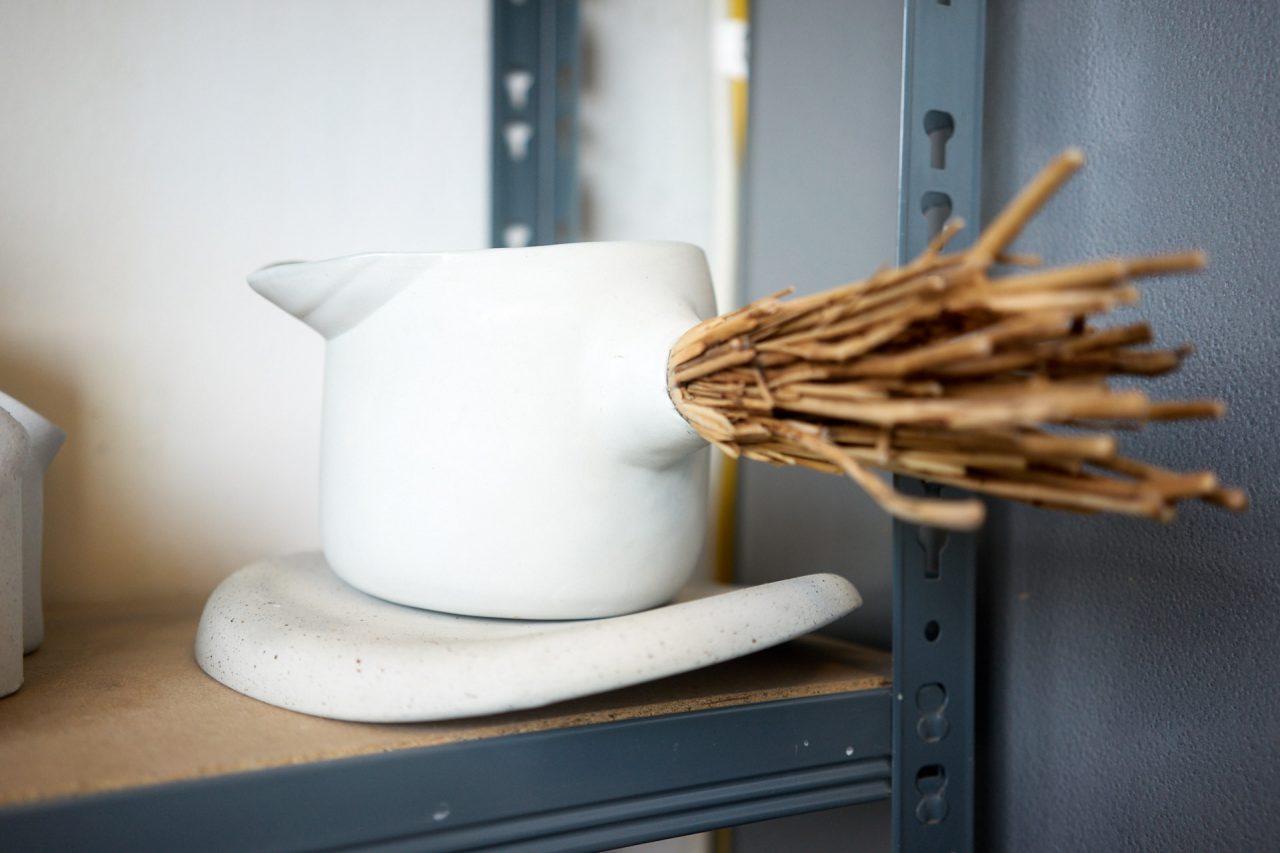
I really like this matte/glossy contrast that you use in many of your objects. Can you tell me a little about how it was born?
We have a tiny obsession for contrasts based on texture. I think they first surfaced in the “plate” collection. We sought to revive the feeling of “grandma’s world”: simple objects in a modest context. A plate that instead of catching your eye, rinses your gaze. Then you touch it and magic happens when the tactile sense awakens.
And chromatically it falls into a fairly minimalist register, you really don’t abuse color :)
M: I like grays and contrasts based on texture. I love people and colorful works but out of my own hand they seem insincere.

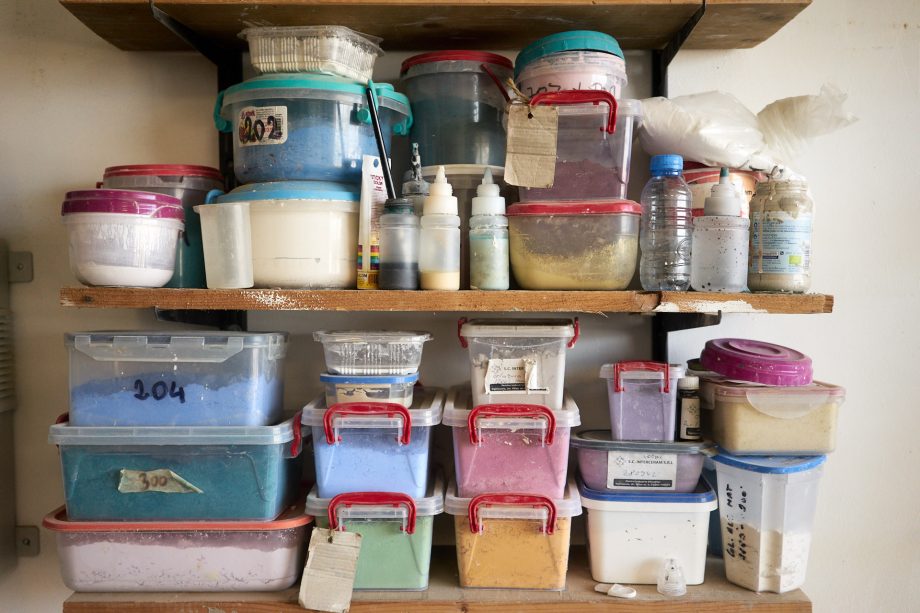


You have a lot of equipment in the workshop, especially from a painter's perspective :). How do you relate to the strictly technical side of creative processes? Magdi, you told me you fought battles for some of them.
M: In ceramics this is not so important. There are many ways to reach the same result, different persons will use different ways. I wasn’t a diligent pupil/student, I only learned the “rules”. I elaborated the techniques I use in my own workshop and for my own needs.


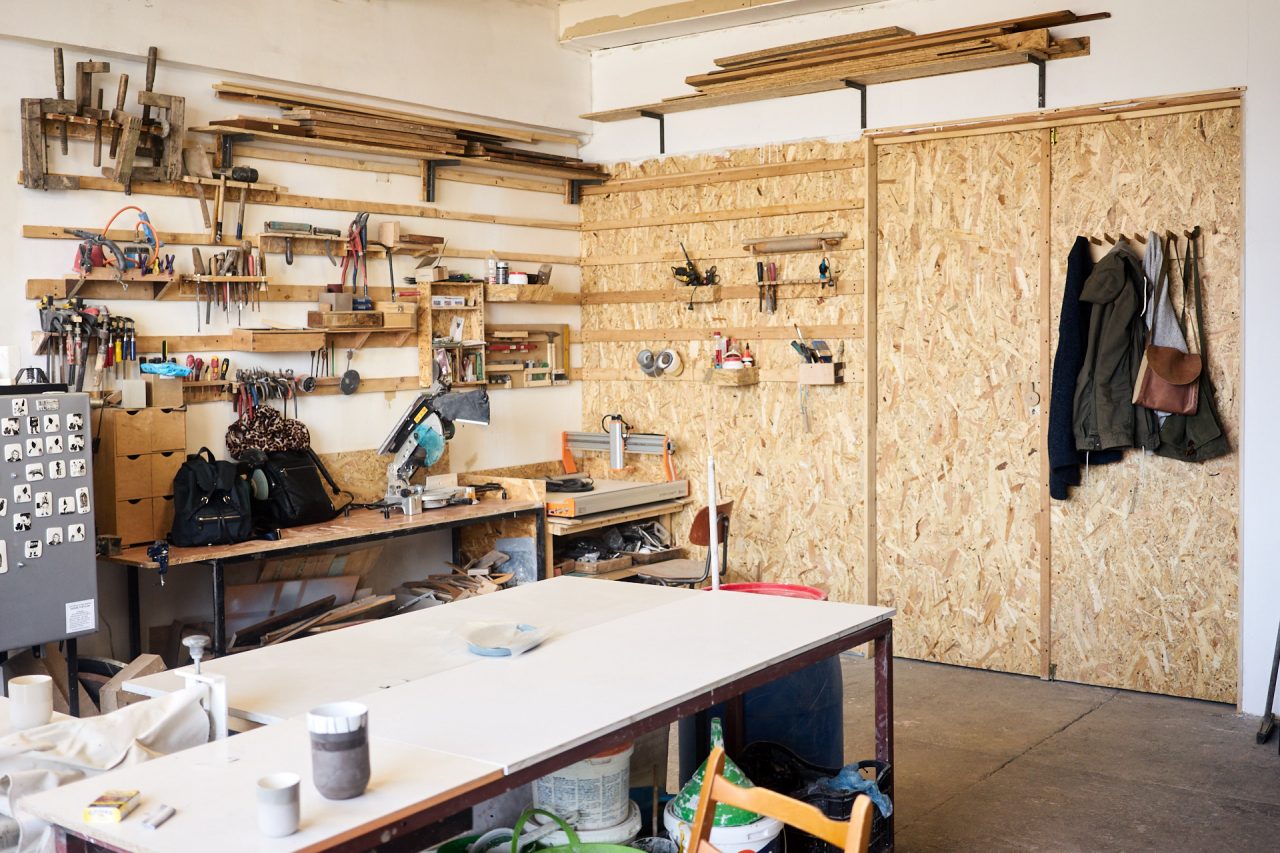
How do you think the relationship between intention, planning, execution, and end product?
M: Modeling is very important for me. Even if the sketch is half a meter tall, it’s much easier for me to think like that. As my drawing is less than perfect, a classic sketch wouldn’t help me, I don’t like it, it doesn’t inspire me and it does not resemble the miracle in my head at all. So I model, modify, I cast a negative, I work in negative, I cast the positive and start all over again if necessary.

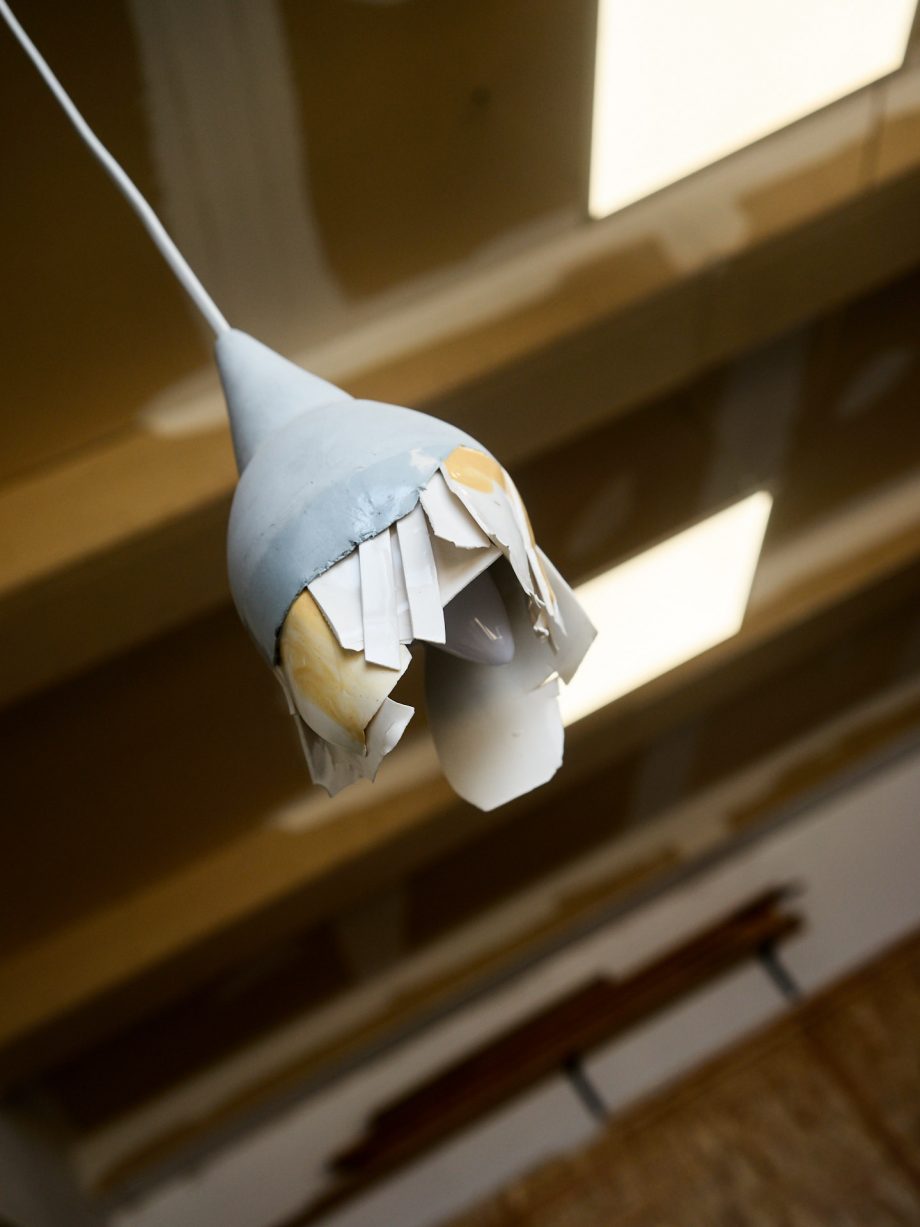
Nature or culture? Which one inspires your themes predominantly?
I think they are closely connected for us. We take our themes from culture (man is a fascinating creature) but inspiration, at least in terms of execution and the final product, is loaded with natural elements.
The collection of illustrations is based on the Romanian ability to make fun of trouble. Now I am drawn to the grandeur of Islamic culture and to small communities choosing to do things differently.

Tell me a few artists you like, who motivate you.
These are three different categories. Our colleagues from the center (Center of Interest :)) motivate us the most. They’re hyperactive, they’re always up to something and cannot wait to tell you about it. On the ceramic side I can say that I am fascinated by the work of Shay Church and Ioana Tămas. But ask me next week, it might change :).

By the way, how much does your art depend on the location/space you work in? I know you recently switched workshop, when you joined the Center of Interest.
Artistic practice does not depend on space, but ceramics needs water and fire.
What do you think of the local artistic community, what relationship do you have with it?
Artists are great, they inspire and motivate us. We like to visit workshops rather than exhibitions. There are fairs and events we only attend for the sake of the community.

How do you put yourself in the state of doing in non-inspirational moments?
You can put yourself in the state of “doing” only through work. We must absolutely be in the workshop, there is always something to be done there. If we have no inspiration, we make clay, we work on serial objects, where you don’t have to think, you know what to do. Inspiration comes, but it has to find you working.
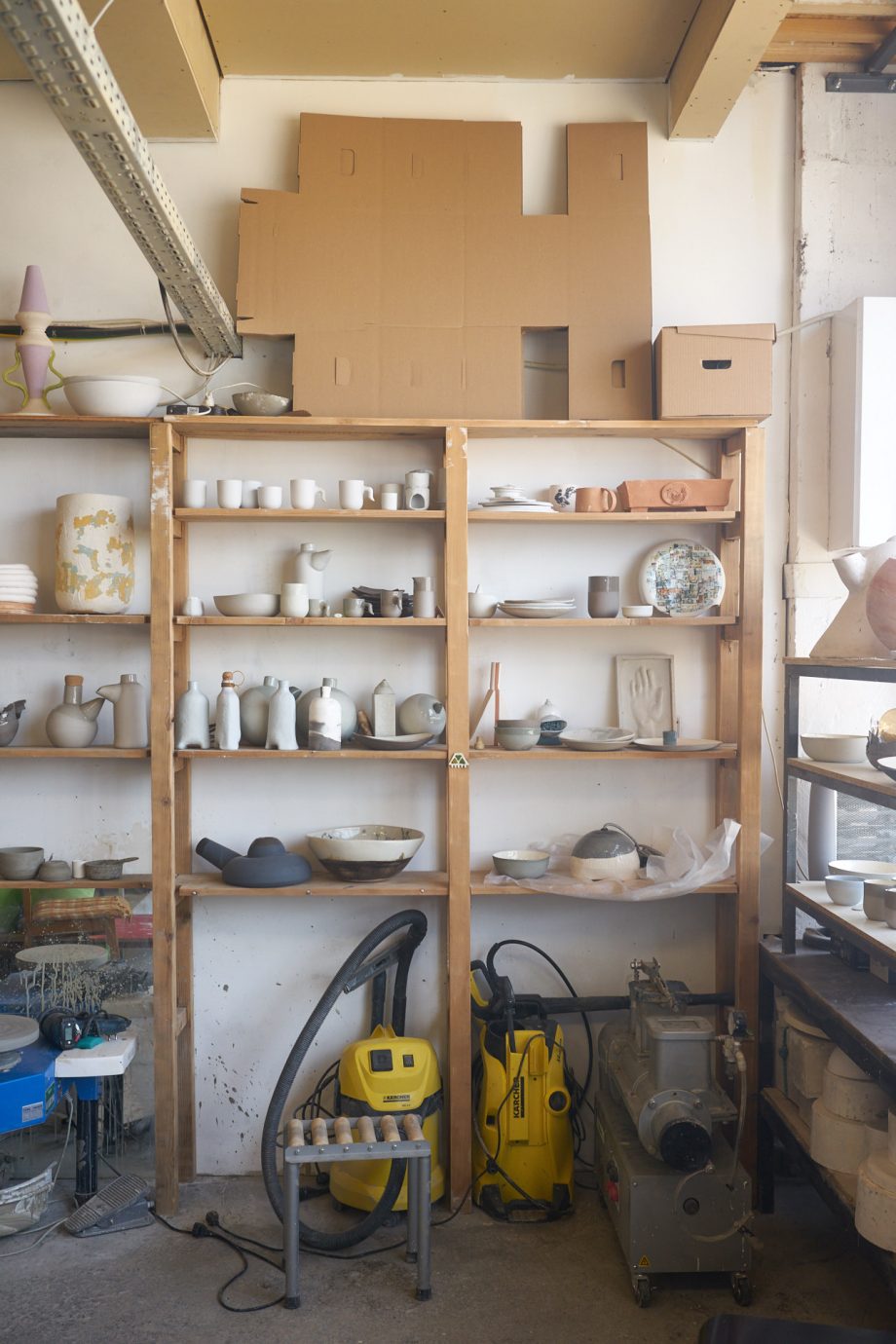
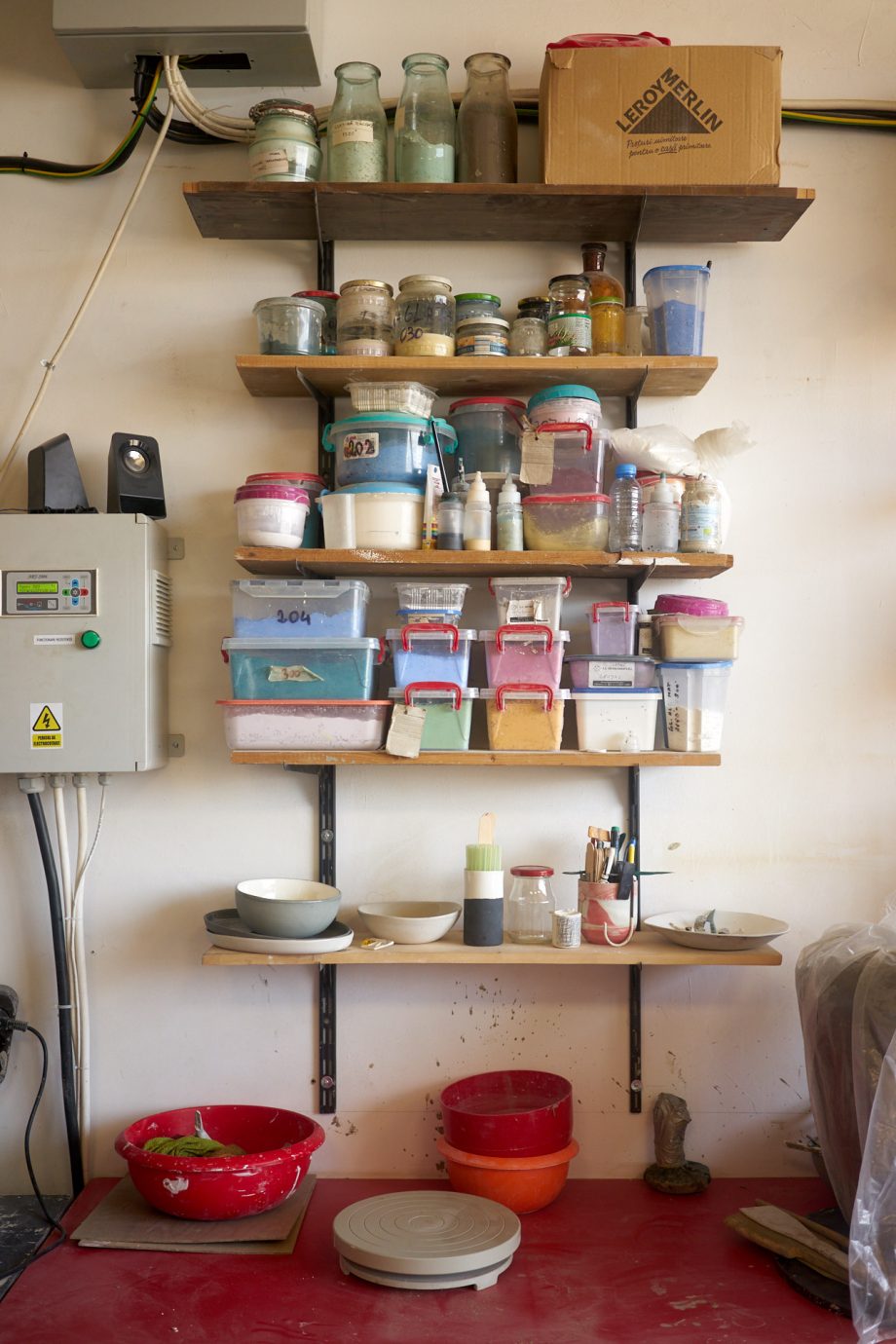
Tell me about an essential moment in your development as artists.
For us it was certainly the purchase of the first kiln, Floki – the Viking. Only then did I really understand the grandeur of ceramics through all the tests and experiments I suddenly had access to.

Finally, three essential things about ceramics: the good, the bad and the ugly. This is one of my favorites :)
The good: the sky is NOT the limit. Ceramics combines them all. There are so many variations, combinations and techniques/technologies that you cannot get bored.
The bad: labels and pride. Ceramists tend to define themselves in a certain way: artist or potter.
The ugly: secrets and envy. Ceramics involves a long and difficult journey and if you come across something that could help a “ceramic brother”, I do not see why you would hide it.
